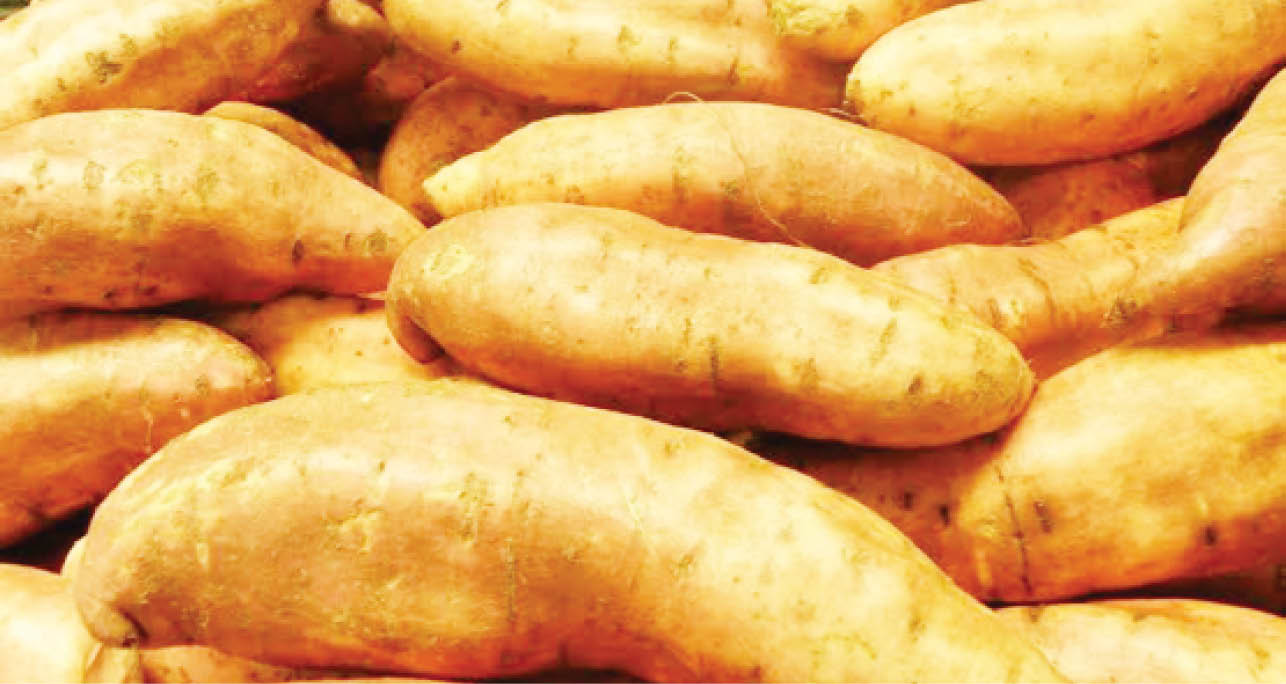Orange-fleshed Sweet Potato: Few things to know about cultivation
Scientists have achieved tolerance of Orange-Fleshed Sweet Potato (OFSP) to drought, heat, pests and diseases by cross-breeding various cultivars and land races with desired characteristics. In Nigeria, it has been improved upon by scientists at the National Root Crops Research Institute, Umudike in Abia State and its outstations in Nyanya (Abuja), Jos (Plateau State) and […]

Sweet potato
Scientists have achieved tolerance of Orange-Fleshed Sweet Potato (OFSP) to drought, heat, pests and diseases by cross-breeding various cultivars and land races with desired characteristics.
In Nigeria, it has been improved upon by scientists at the National Root Crops Research Institute, Umudike in Abia State and its outstations in Nyanya (Abuja), Jos (Plateau State) and other places where farmers can obtain the vines.
- TETFund to reinforce huge investments in 13 new varsities
- Sterling Bank and Agege Bread ad: An unpardonable gaffe
Chief Daniel Okafor, National President of POFAN, told Daily Trust that they have been promoting the cultivation of the crop for many years now, adding that the CIP report further highlights the benefits they have long been preaching and urging Nigerian farmers to take advantage of.
He however said insecurity and lack of government support have been the major challenges confronting the cultivation, adding that POFAN has network all over and recently established a training school for coaching farmers.
Chief Okafor also told Daily Trust that interested farmers can get a bundle of the vines at a cheaper cost.
A report by the Technologies for African Agricultural Transformation stated that OFSP’s “adaptations to drier and warmer conditions are made by selecting traits such as early maturation, deeper roots, narrower leaves, erect growth and high vine survival. Resistance of OFSP to virus and insect pests is accomplished by mass selection based on observation of symptoms in the field and genetic marker techniques.
Drought tolerant OFSP varieties are especially suited for regions with semi-arid and dry tropical climates in eastern, western and southern Africa, which face negative impacts of climate change of rainfall. Virus resistant OFSP cultivars are particularly useful for regions with high infestation rates to increase food security and prevent severe outbreaks.
Value chain
OFSP tubers can be cooked and roasted fresh, or milled into flour and mashed into puree for use in a range of products including breads, cakes, juices, porridge etc. It can substitute wheat-based products and is gluten-free.
Peels and tubers can also be made into feed meal for animal rearing, as well as for starch extraction.
Varieties that are drought tolerant and virus resistant contain high levels of beta-carotene, also called pro-vitamin A carotenoid, and gives its orange colour.
According to TAAT, the beta-carotene inside tubers is largely retained when processed, making it perfect for manufacturing healthy foods for consumers.
Varieties of OFSP that are adapted to drought and resistant to viruses are propagated from seeds, tubers or vines, following the same procedures as non-adapted cultivars.
Cuttings from vines are most commonly used for planting and easy to make yourself. Slips from tubers or cuttings from vines are raised by planting them in beds or placing the bottom of the stem in water. The healthy slips or cuttings are planted by inserting these at an angle in the soil, using a spacing of 50 cm between rows and 30 cm from plant to plant.
